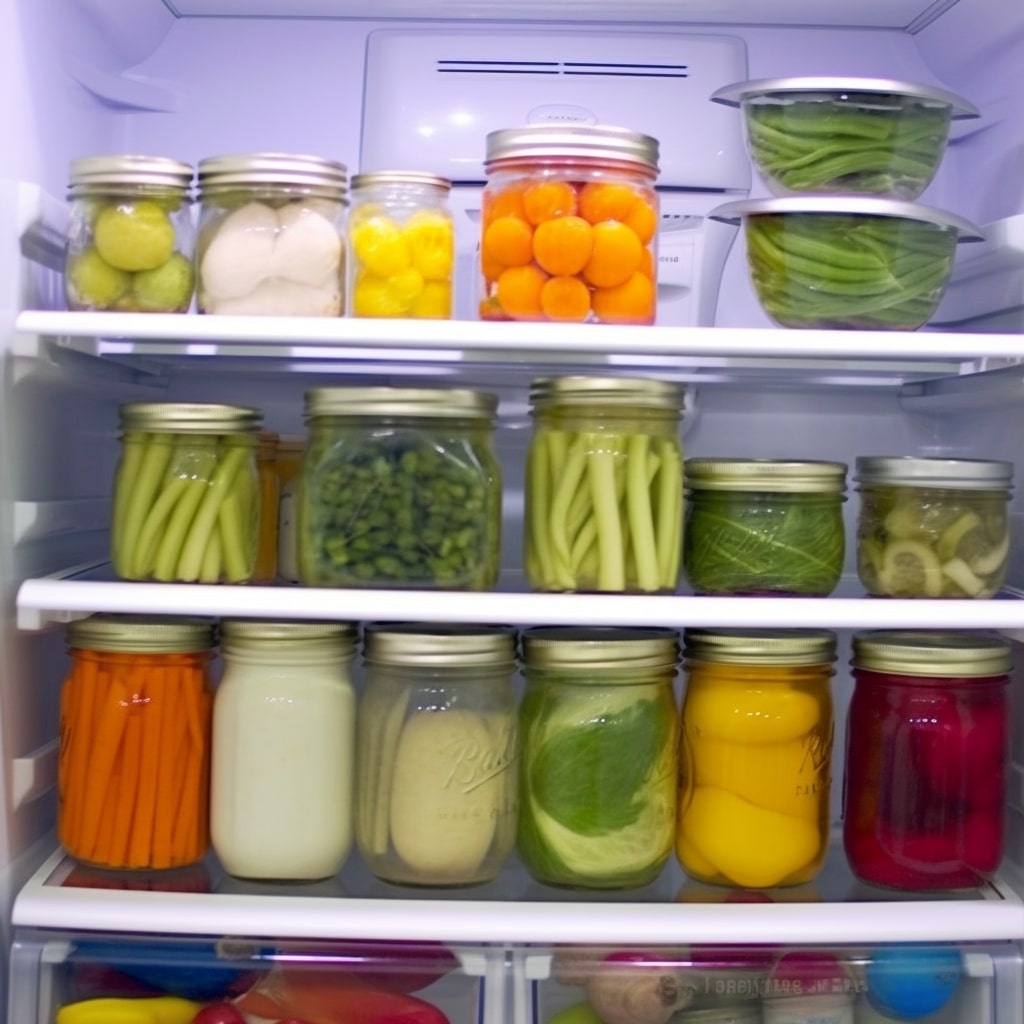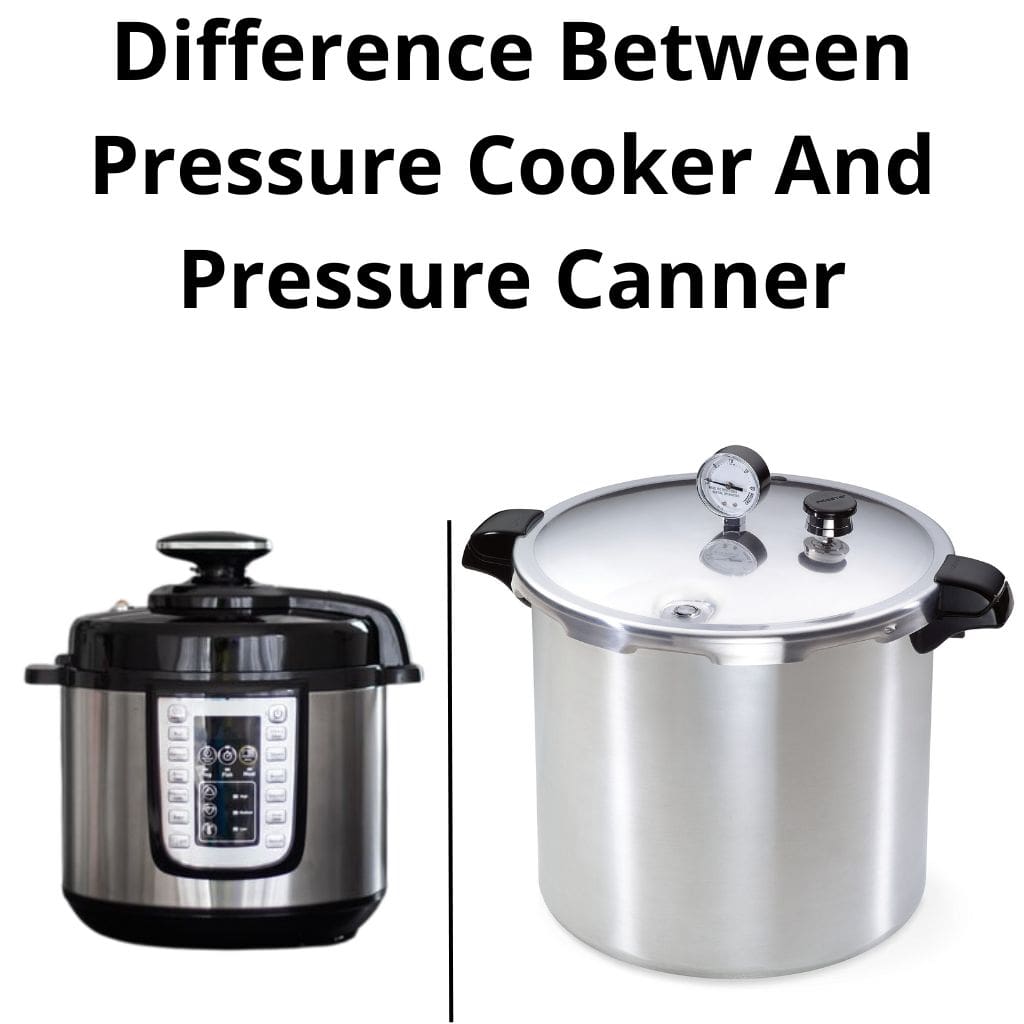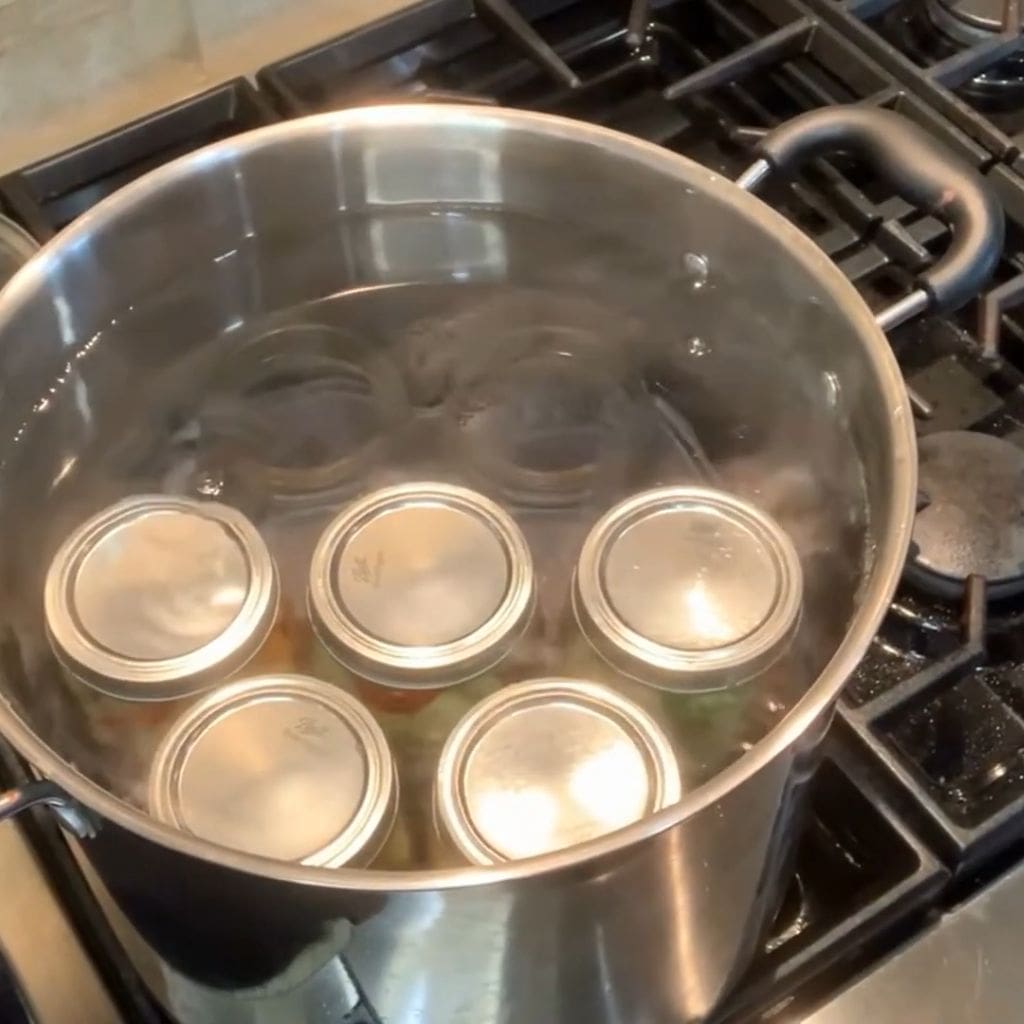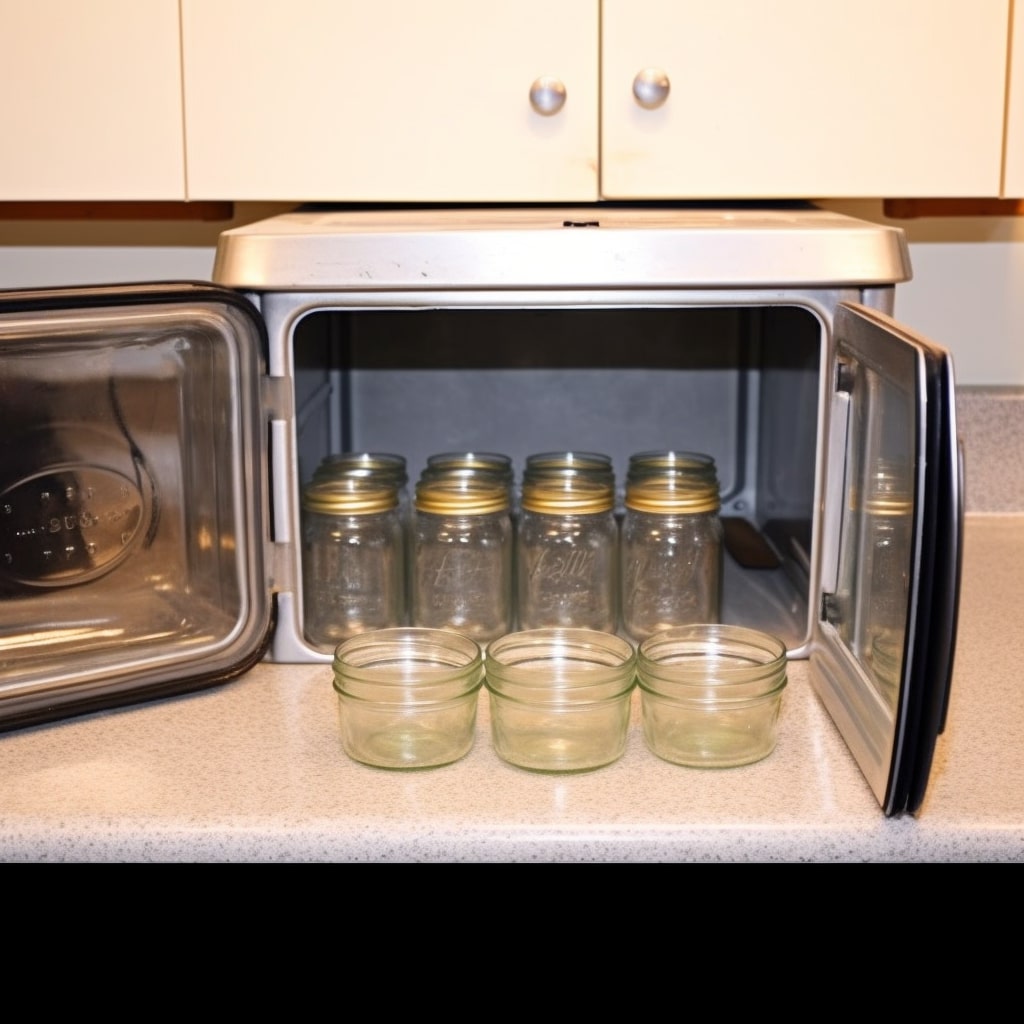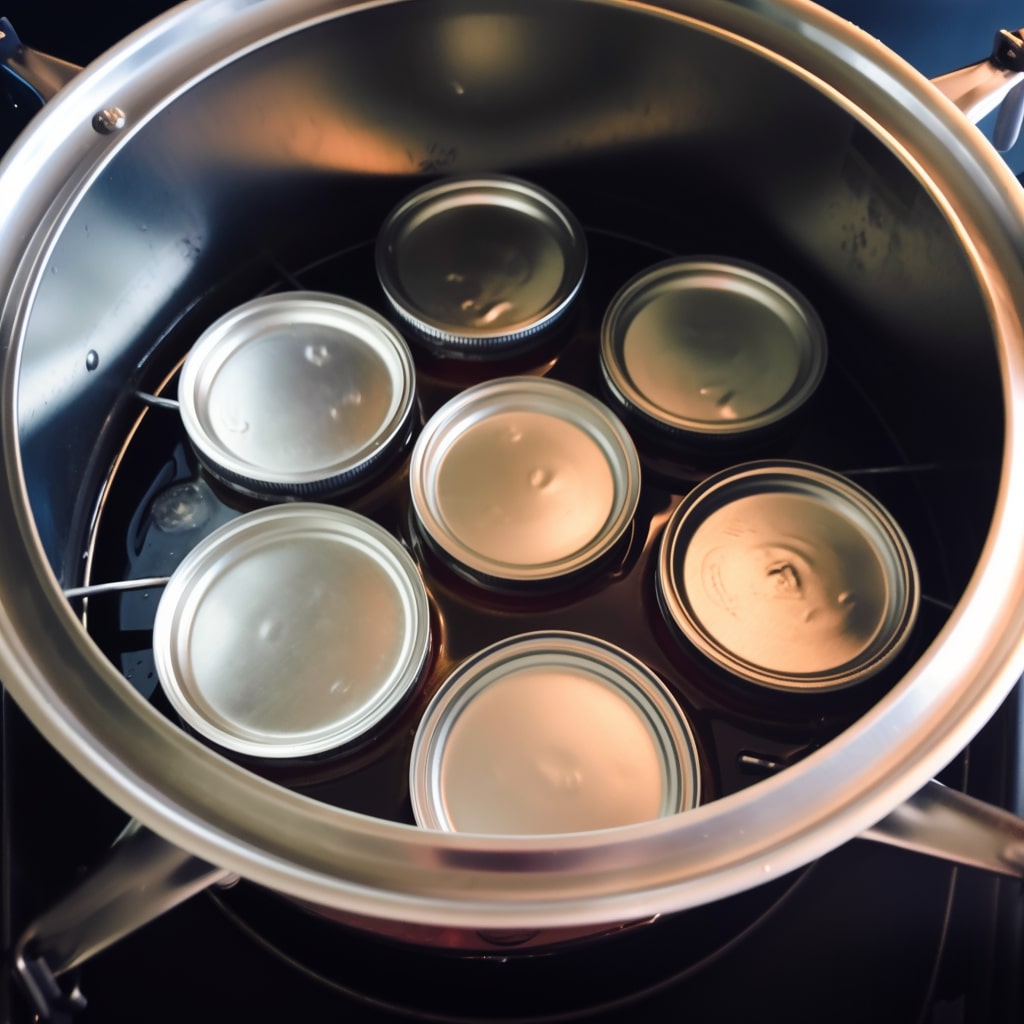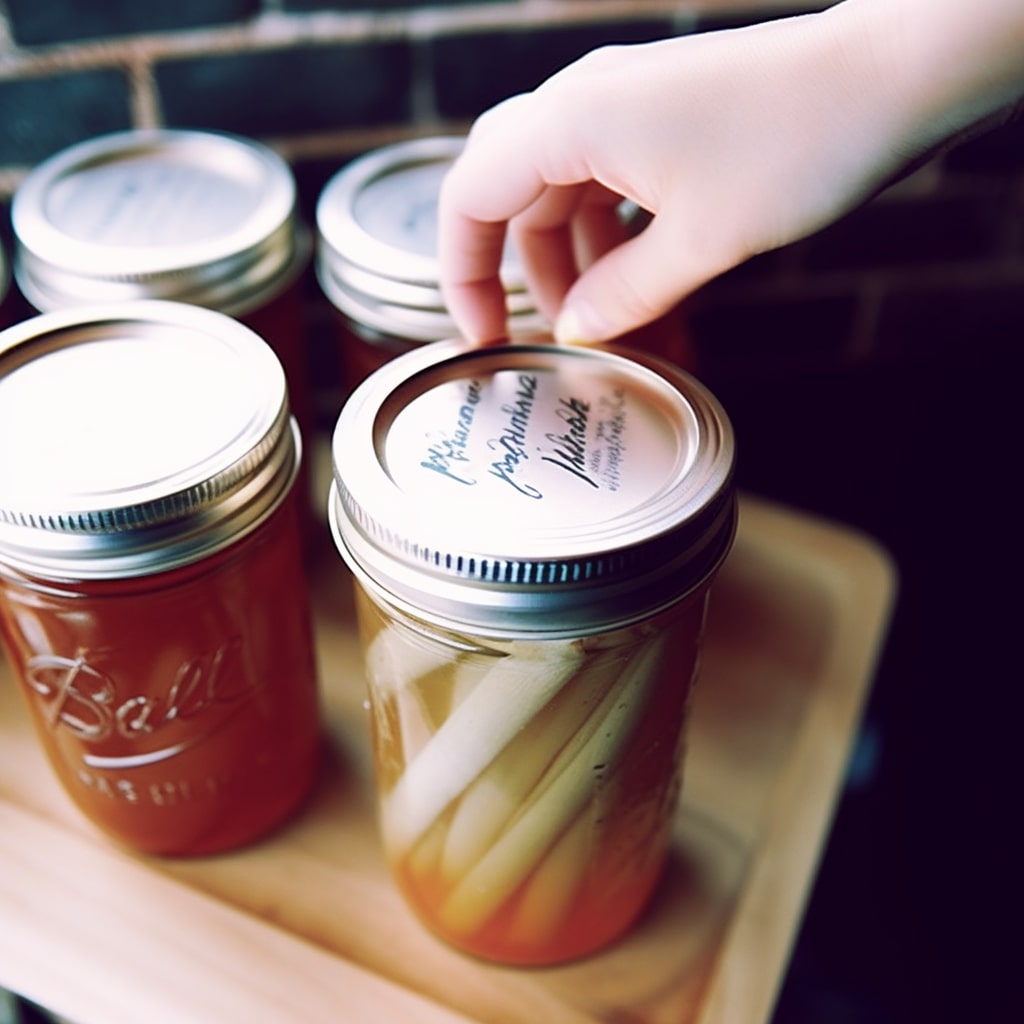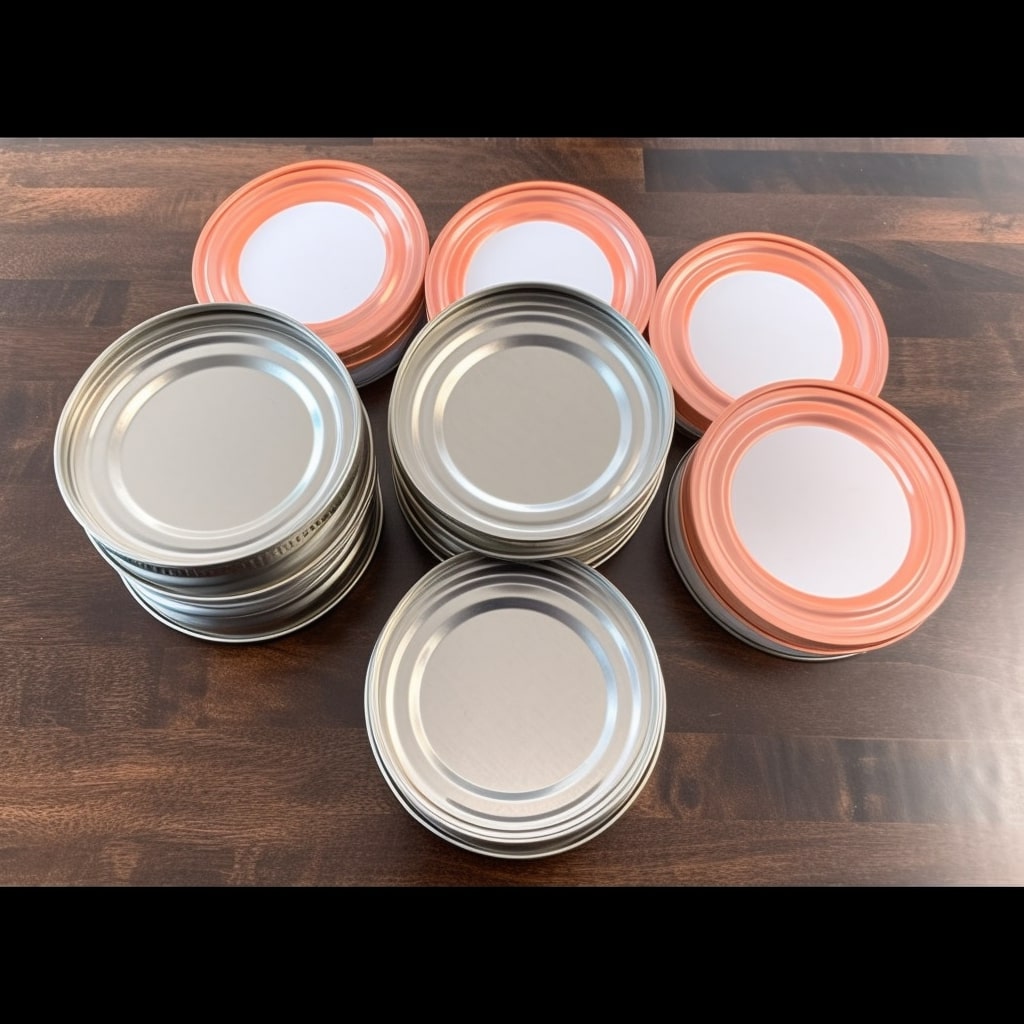Food dehydration removes moisture to prolong its shelf life and preserve its nutritional value. A tried-and-true technique for preserving food’s freshness while lowering its weight and volume and avoiding spoilage is dehydration.
Food may be stored for a long time without refrigeration by reducing its water content, which inhibits the growth of bacteria, yeast, and mould.
Due to the rising popularity of home dehydrators and commercial dried food products, food dehydration has emerged as a practical and efficient choice for people and businesses.
Dehydrating Methods
Dehydration is a method of food preservation that increases the amount of time food may be stored by removing moisture from it. Foods can be dried using various techniques, each with a unique strategy, dehydrating time needs, and equipment requirements. The following techniques are some of the more popular ones on how to dehydrate foods perfectly:
Sun drying
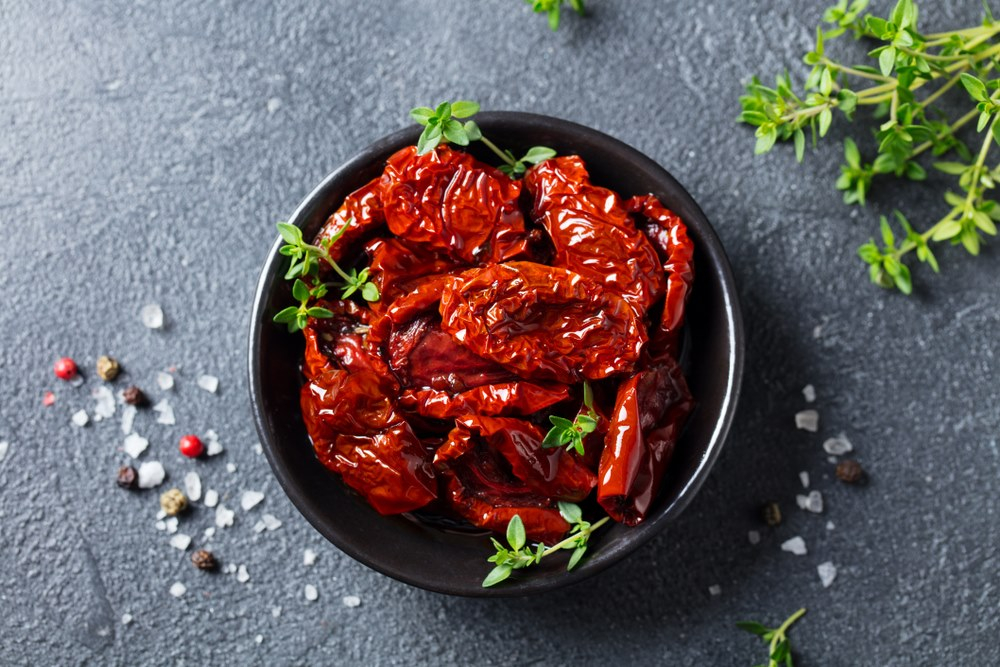
Traditional and simple, sun drying is a way to dehydrate food. It may not work well in places with high humidity or throughout some seasons, but it works best in hot, dry conditions. This process uses sunshine to dry out various items, including fruits like figs and mangos.
To sun dry food, first arrange it, whole or cut into slices, on a mesh screen or tray constructed of wooden dowels. The mesh encourages equal drying by allowing air to circulate. To protect the goods from insects and vermin, it is advisable to cover it with a second screen.
The availability of sunny locations with low humidity and a minimum temperature of 86° F (30° C) is necessary for the effectiveness. The drying process for food dehydration will work best under these circumstances. It’s important to remember that drying times might vary based on the dried product.
The type of screen used is a crucial factor during sun drying. It is advised against using hardware cloth screens since they might oxidize and leave residue on the food, degrading its quality. Choose screens made of materials that can be in touch with food instead.
Air drying
Although air drying doesn’t require direct sunshine, it is similar to sun drying preservation. Instead, this method calls for putting products in a room with good ventilation and airflow. The weather at the time will determine whether it is done indoors or outside. Although air drying could need more time than sun drying, it is a dependable and accessible technique.
The adaptability of air drying is one of its benefits. Although it may be used for a wide range of foods, leafy greens, herbal teas, and spices are particularly well suited for preservation. For instance, the procedure successfully eliminates moisture while air drying leafy greens, increasing their shelf life.
This dehydrating method is also advantageous for spices and herbal teas. The moisture level of the herbs or spices progressively reduces as air is allowed to circulate around them, concentrating their flavors and intensifying their scent. Then, the dried herbs and spices can be used to flavor dishes, infuse tea, or make custom spice mixes.
Solar drying
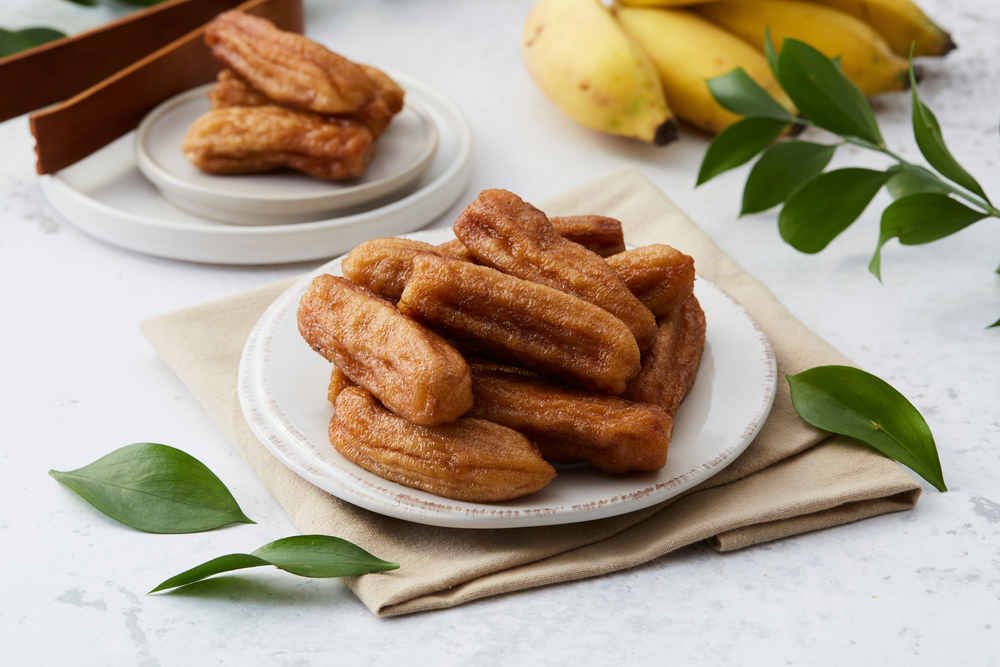
A dehydration preserving technique called solar drying uses the sun’s energy to passively dry food. A dehydrator is used in this procedure, and as it has no heating components or fans to circulate the air, it doesn’t need energy. To utilise the sun’s energy for food dehydration or drying, solar dryers are often positioned outside and shaped like miniature tabletop greenhouses.
Oven drying
The process of food dehydration in your oven at around 140°F (60°C) is known as oven drying. This method may be useful for those who would rather not purchase more appliances. Foods might take anywhere between 6 and 10 hours to dry. As higher temperatures will cook rather than dry it, it is essential to ensure your oven can be adjusted to a temperature of 140°F (60°C) or lower. It is advised to prop open the oven door during dehydrating to let any extra moisture escape. To prevent overdrying or burning, it’s crucial to keep a close eye on the process.
Electric dehydrators
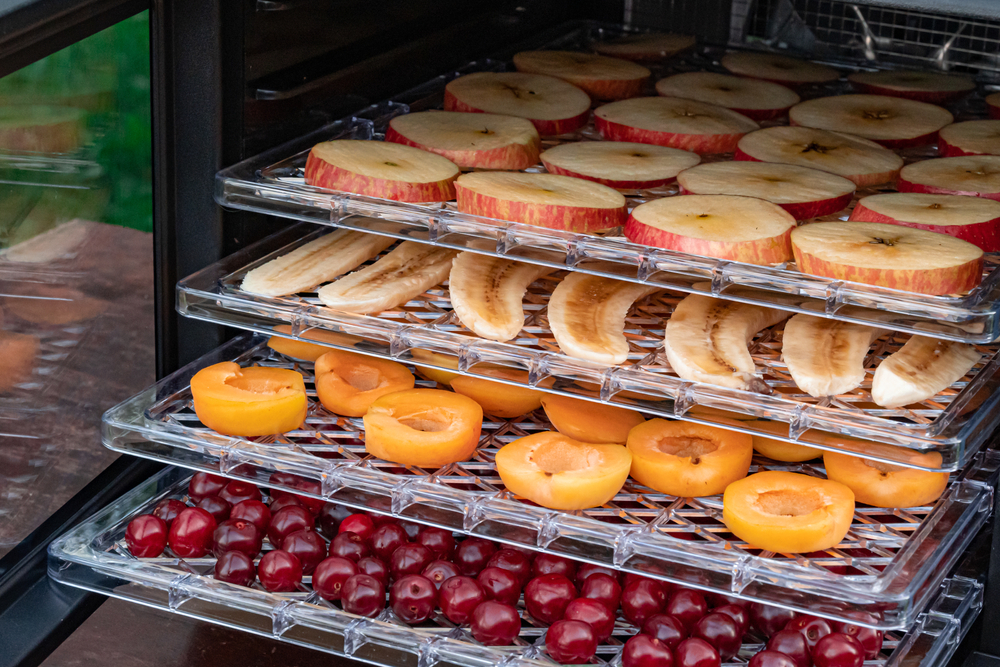
Electric food dehydrator is a very practical and effective choice for drying various foods. These dehydrators comprise stackable trays with a heating source and a fan to move warm air.
Electric food dehydrator enables exact temperature control, ensuring uniform drying throughout all of the trays. They have the benefit of being both practical and energy-efficient, which makes them appropriate for drying a variety of goods. In addition, most electric dehydrators have a temperature indicator and an adjustable dial that lets customers regulate the drying pace to suit their demands.
Microwave drying
On the other hand, microwave drying offers a rapid way of drying tiny amounts of herbs and some leafy vegetables. When applied to most other forms, it is less effective. Fruits need 20 to 40 minutes in the microwave to thoroughly dry out, but it’s crucial to watch them carefully to avoid overcooking.
Otherwise, herbs heated in the microwave usually dry in 2 to 3 minutes. It is important to remember that microwave drying for food dehydration frequently results in food that tastes overdone rather than adequately dried.
Freeze Drying
In comparison, freeze-drying is a more sophisticated technique for dehydrating that entails freezing the item before sublimating the moisture out of it. This special method transforms ice straight from a solid state into a vapor.
Freeze-dried food maintains its original form, texture, flavor, and nutritional value. However, due to its unique needs, freeze-drying is more frequently used in industrial manufacturing than domestic usage. Effective execution requires specialized food dehydration equipment and knowledge.
Ideal foods to dehydrate you may try
Dehydration can be applied to many kinds of food, including fruits, vegetables, meats, and yogurt. Unexpectedly, even jams and sauces may be dried out, making better use of available storage space and extending the shelf life in the cupboard.
The danger of foodborne infections must be avoided by properly steaming, roasting, or cooking raw beef and poultry to internal temperatures of at least 160°F (71°C) and 165°F (74°C), respectively, before dehydration.
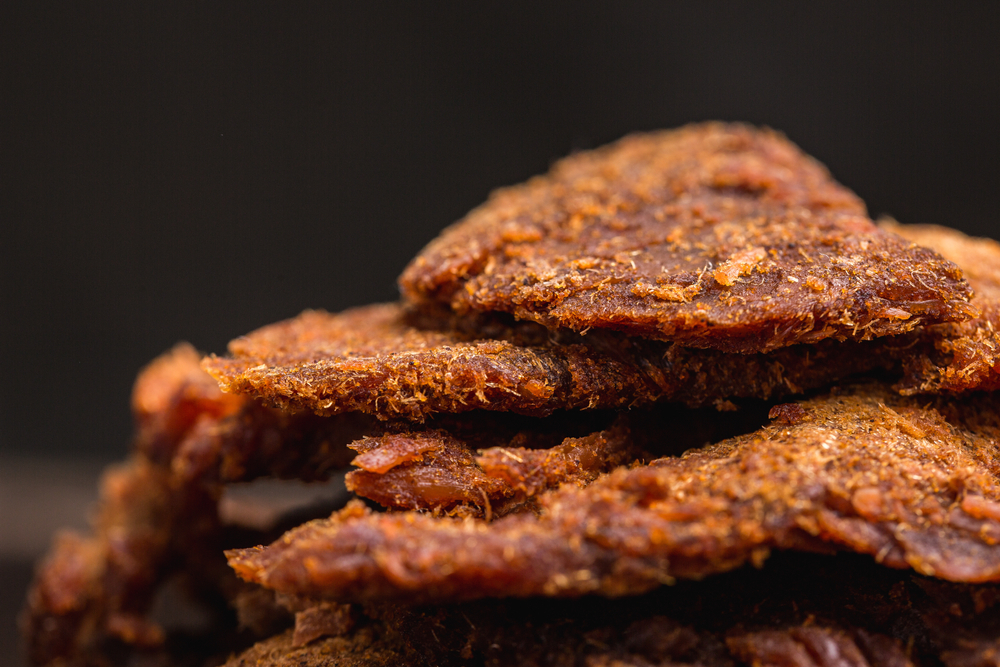
Here are a few ideas for foods you can try dehydrating:
- Fruits possess natural sugars and flavors, making them ideal candidates for dehydration. Dehydrated fruits serve as nutritious snacks, suitable for consumption alone or with cereals, trail mixes, baking, and cooking. Some examples of fruits that can be dehydrated include apples, bananas, berries, mangoes, pineapples, peaches, apricots, cherries, and grapes as well as a solution on how to preserve grapes longer.
- Vegetables, once dehydrated, offer great versatility and can be incorporated into soups, stews, sauces, and various other dishes. Common vegetables that can be dehydrated include tomatoes, bell peppers, carrots, onions, mushrooms, and green beans. Dehydrated vegetables also prove useful for backpacking or camping trips.
- Lean meats are the best to hydrate snacks particularly those with low-fat content, which can be dehydrated to produce jerky—a popular, flavorful, and protein-rich snack. Meats such as beef, turkey, chicken, and even fish can undergo dehydration and be seasoned with spices and marinades to enhance their taste.
- Sauces and syrups, including jam, pizza sauce, maple syrup, spaghetti sauce, barbecue sauce, and molasses, can be subjected to dehydration, allowing for their preservation and extended shelf life.
- Herbs and spices can be dehydrated to retain their flavors over extended periods. Popular choices for dehydration include basil, oregano, thyme, rosemary, parsley, and mint. Dehydrated herbs can be used in cooking, seasoning blends, teas, and infused oils.
- Nuts and seeds can benefit from dehydration as it helps prolong their shelf life while preserving their natural flavors and nutrients. Almonds, walnuts, pecans, pumpkin seeds, and sunflower seeds are commonly dehydrated nuts and seeds. Dehydrated versions can be enjoyed as snacks, added to baked goods, or used as toppings.
- Grains and legumes, such as rice, quinoa, lentils, and beans, can undergo dehydration for long-term storage and convenient meal preparation. Dehydrated grains and legumes can be rehydrated and used in soups, stews, salads, or side dishes.
- Pasta and noodles, when dehydrated, become lightweight, making them suitable for backpacking or camping trips. These dehydrated forms can be easily rehydrated with boiling water and combined with sauces or other ingredients for quick, effortless meals.
You don’t want to dehydrate these food
While a lot of food can be dehydrated, there are a few that should be avoided entirely for safety or effectiveness reasons, such as:
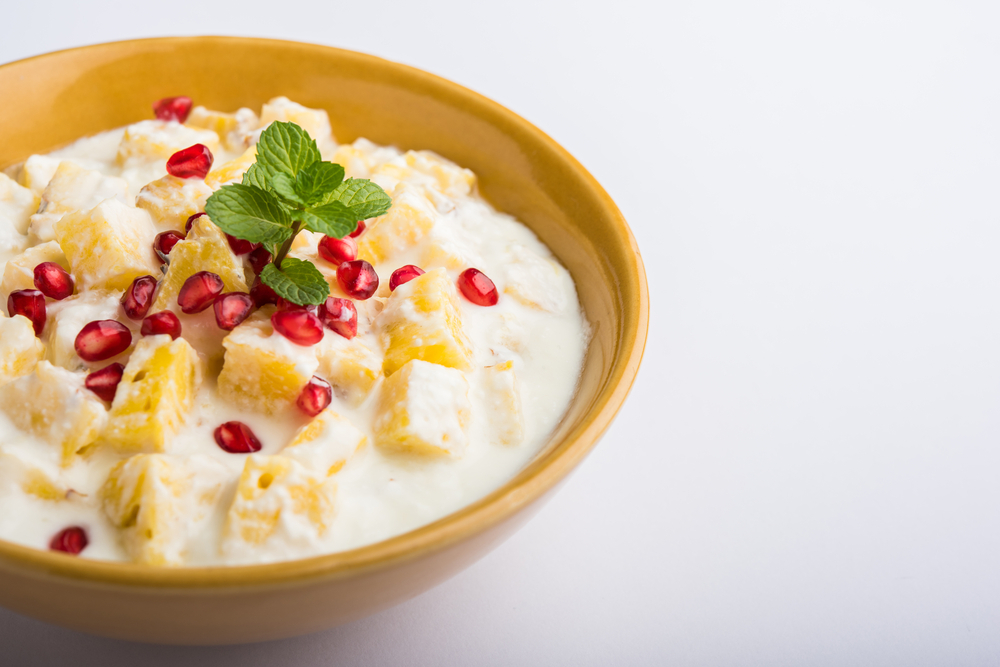
- High-Fat Foods: For various reasons, several foods should not be consumed while dehydrated. Foods high in fat, such as bacon, fatty meats, and oily fish, do not dehydrate well. These foods’ fat content has the potential to get rancid during the drying process, which has a detrimental impact on the dehydrated product’s flavour and shelf life.
- High-Moisture Foods: Foods heavy in moisture, such as watermelon, citrus fruits, cucumbers, and lettuce, should not be consumed if you are dehydrated. Due to their high water content, many foods are difficult to dehydrate completely. This can cause the dehydrated form to deteriorate or acquire unwanted tastes potentially.
- Dairy Products: Additionally, liquid dairy products like milk, yoghurt, and cream should not be consumed while dehydrated. These goods may clump, separate, or deteriorate when dehydrated. But by making them into powdered versions, like powdered milk or powdered cheese, you can dehydrate some dairy products.
- Eggs: It is not advisable to dehydrate raw eggs or egg whites since they will not dehydrate well and may be contaminated with germs. On the other hand, cooked eggs can be dried out and made into powder or flakes that resemble scrambled eggs.
- Fresh Herbs: Basil, cilantro, and parsley are among the delicate fresh herbs that may not dehydrate well since they might lose flavor and perfume throughout the dehydrating process. For fresh herbs, it is advised to employ alternate preservation techniques, such as freezing or drying them in a low-temperature oven.
- Starchy Vegetables: Due to their high carbohydrate content, starchy crops like potatoes or squash may not efficiently dehydrate. After drying, some veggies may acquire a mealy or chewy texture.
- Foods with Complex Structures: Whole fruits, big chunks of meat, and thick sauces are examples of foods with complex structures that could not dehydrate uniformly. It might be difficult to achieve even drying, which leads to an inferior final product.
Dehydration food preservation and shelf life
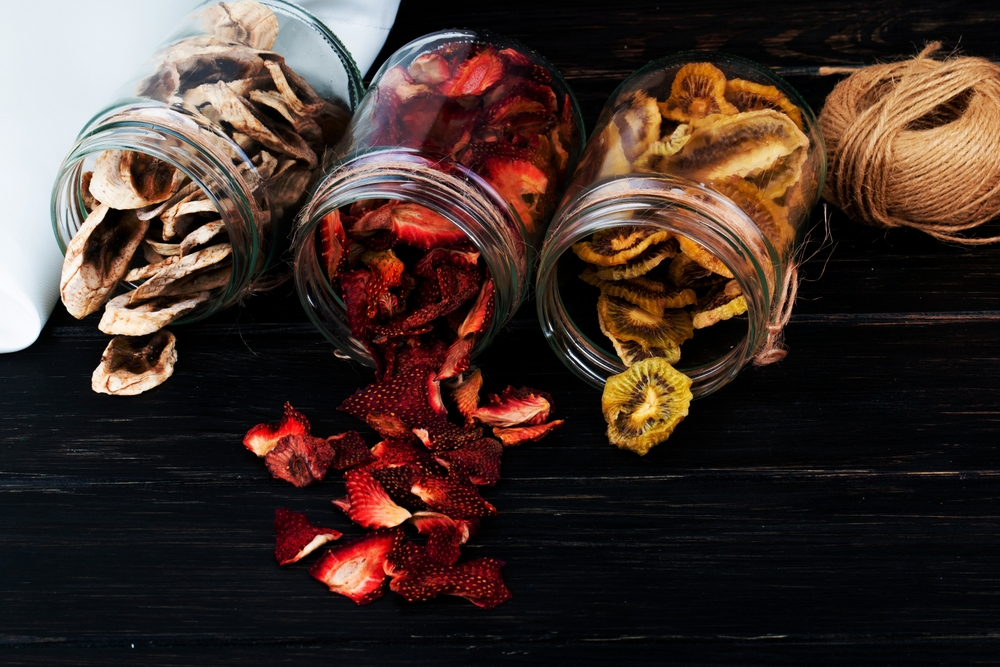
The quality and shelf life of dried foods must be preserved through proper storage since heat and moisture can hasten the decay of these goods. It is advised to store dried foods in an airtight container and to keep them in a cold, dry place for best preservation.
Dried food shelf life can vary based on the ingredients and storage conditions. Generally speaking, the time frame might be from a few months to many years. Let’s examine a few instances in more detail:
- Homemade jerky: It may normally maintain its quality for 1 to 2 months when kept in the cupboard or refrigerator.
- Fruit that has been dried: Fruit that has been dried can keep its freshness for about six months when it is kept in the cupboard or refrigerator. For the best flavour, eating the fruit within a month after the container has been opened and placed in the pantry is advised.
- Dried herbs: They may often be kept for 1 to 2 years while maintaining their tastes and smells with careful storage in airtight containers and in a cold, dry environment.
- Dried mushrooms: If kept in the pantry, dried mushrooms may usually be kept for one to two years without losing quality. To ensure their quality, it is advised to use the mushrooms within three months of opening the package and exposing them to the dampness of the pantry.
Since this topic worth an in-depth research as well as variety of methods to efficiently extend dehydrated foods’ shelf life we have got a whole topic covering this: How long do dehydrated foods last?
Benefits of food dehydration will surprise you
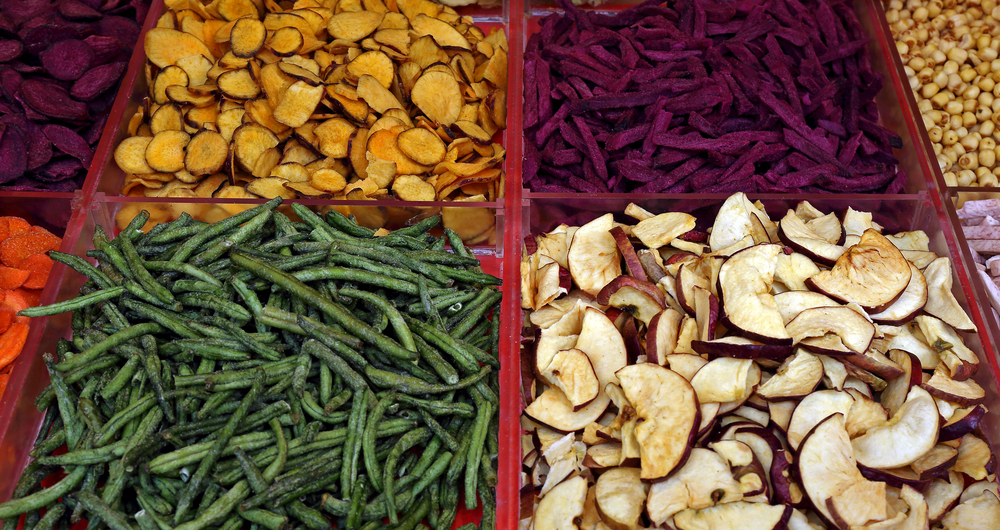
Dehydrating offers numerous advantages: it saves money, reduces waste, and speeds up cooking. You can also enhance the flavour of the dried food by adding seasoning or spices, resulting in a kitchen stocked with healthy and easily portable snacks.
Here are some benefits you can consider:
Whole Nutrients Intact
Food dehydration keeps a substantial percentage of the vital elements included in fresh foods. Dehydrated foods still include vital vitamins, minerals, and antioxidants that are essential for general health and well-being, even if there may be some nutritional loss during the dehydration process. Even when fresh produce is not easily accessible, you may benefit from the stored nutrients and include them in your diet by ingesting dried meals.
Fully Control over your Portion
Dehydrated meals, especially when eaten as snacks, might help you regulate your portion sizes and avoid overeating. It is simpler to control serving quantities because these foods are frequently easy pre-portioned lightweight items. People who choose dehydrated snacks may ensure they eat the right quantity and avoid consuming too many calories. For people trying to maintain a healthy weight or who are aware of their eating habits, this portion control component can be very beneficial.
Energy and Satiety

The natural sugars and good fats in dehydrated fruits and nuts provide an instant energy boost. They can act as a handy source of energy throughout the day when you need a boost. Dehydrated foods can also encourage satiety and make you feel content and full in between meals. Dehydrated fruits and nuts’ natural sugars and good fats work together to give you a longer-lasting sensation of fullness, which makes it less tempting to overeat or snack excessively.
Convenience and Accessibility
Foods that have been dehydrated have the benefit of being shelf-stable and requiring no refrigeration, which makes them very practical and available. They can be kept for long periods without going bad, giving you access to a ready supply of nutrients whenever you need it. Dehydrated meals are a great option for folks who lead busy lives, like the outdoors, or travel regularly because of their convenience. Dehydrated foods may be a dependable choice whether you’re on a lengthy walk, a road trip, or just looking for a fast and wholesome snack at work.
Reduced Food Waste
Food waste may be decreased by dehydrating perishable foodstuffs, which is one of the many important advantages. Dehydrating extra fruits, vegetables, or herbs can have their shelf life greatly increased. Dehydrating rotten produce will keep it viable for a longer amount of time than throwing it away. By reducing landfill contributions, this decrease in food waste helps the environment and enables you to enjoy your favourite fruits and vegetables all year long, even when they are not in season.
Versatility in Cooking
Due to their adaptability, dehydrated foods provide a wide range of culinary options. They may be dehydrated and used in a variety of recipes, including soups, stews, and casseroles, to enhance taste and texture.
Dehydrated items can be reconstituted to restore their original shape and flavour, making them fit for use in cooking. Additionally, dried foods may be used as toppings to yoghurt, cereal, or salads to improve the nutritional value of your meals. You may improve the overall flavour and nutritional content of your dishes by incorporating dehydrated foods into your culinary masterpieces.
How To Prepare Food And Equipment For Dehydrating
To achieve safe and effective dehydration, it is essential to properly prepare the food and the dehydrating equipment. Here’s a how-to manual to walk you through the procedure:
Choosing Quality, Fresh Ingredients
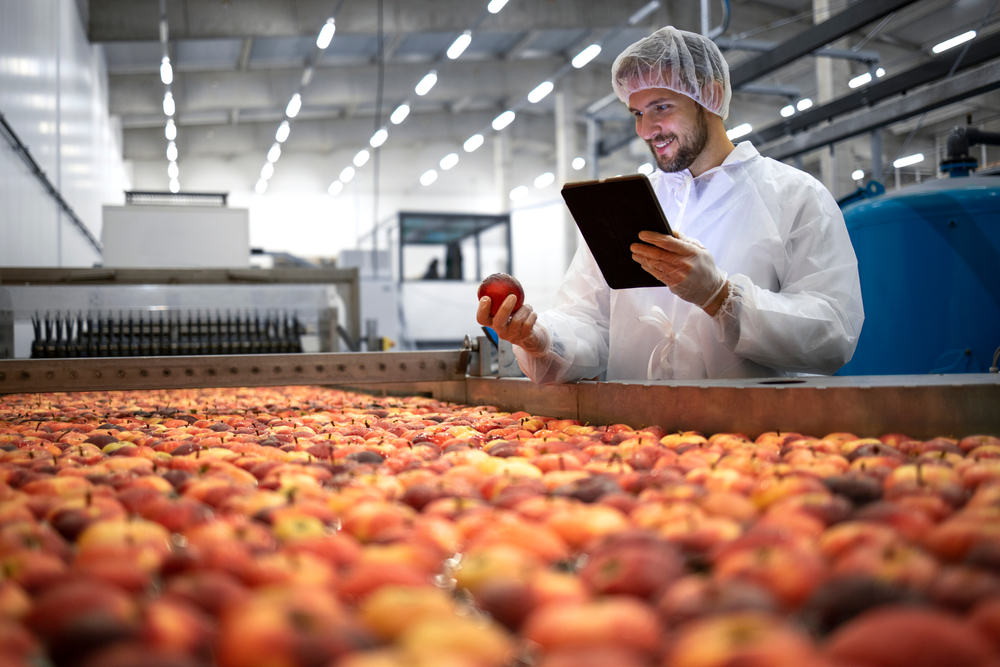
Choose fresh, ripe, and high-quality product or other components for dehydration to achieve the greatest results. Examine them thoroughly, looking for any indications of damage or deterioration. Anything that doesn’t adhere to the requirements is to be thrown away.
Food Cleaning and Washing

It’s crucial to properly wash the fruits or veggies before dehydrating them. To get rid of any surface pollutants, debris, or grime, give them a good rinse under cold running water. To make sure the product is clean, lightly scrub it if necessary. Use a fresh towel or paper towel to pat them dry after washing gently.
Eliminating the skin, seeds, and pits as necessary
Before dehydrating some items, such as apples, peaches, or cherries, it may be necessary to peel them or remove the pits and seeds. To guarantee proper handling, check the specific recommendations for each type.
Dividing into even pieces
It’s crucial to trim or slice the dehydration food into consistent pieces for equal drying. Consider the texture you want, then alter the thickness. Dehydrating thicker chunks takes longer. To make uniform cuts, use a mandoline or a sharp knife.
Blanching some vegetables
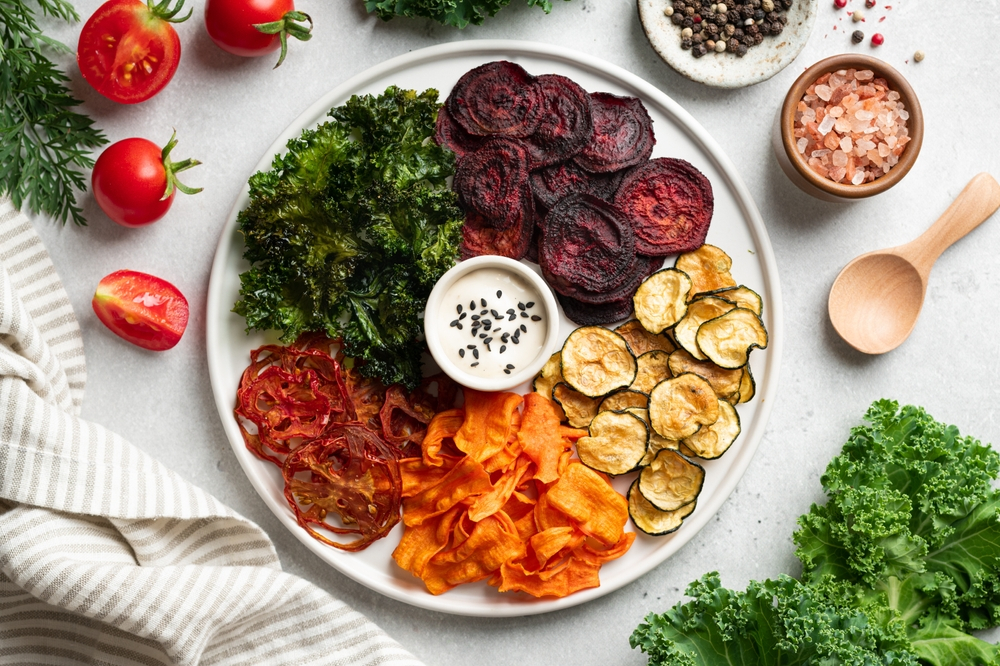
In the optional blanching process, vegetables are quickly submerged in boiling water, followed by an ice bath, and then dried off. The colour, texture, and nutritional value of the veggies may all be preserved by this preliminary cooking. For vegetables like carrots, green beans, or broccoli in particular, it is advised. Observe the proper blanching durations for every vegetable.
Food Presentation on Dehydrator Trays
Once the meal is ready, carefully arrange the pieces on the dehydrator trays, leaving enough space between each to allow for proper ventilation. The trays should be open; doing so might prevent appropriate drying.
Heating and Dehydrator Cleaning
Preheating the food dehydrator requires according to the manufacturer’s recommendations. Additionally, it’s critical to thoroughly clean the dehydrator and the trays in advance to remove any debris or residue that can impair the quality of outcomes.
If necessary, take into account using parchment paper or non-stick sheets.
Use parchment paper or non-stick sheets on the dehydrator trays if the food you are drying has tiny bits or a tendency to stick. As a result, the food won’t stick and will be simpler to remove after drying.
Labeling and Batch-Dating

It’s a good idea to name and date each batch of dried food in order to keep track of storage durations and preserve organization. This routine helps you maintain track of freshness and makes sure you eat the dried food within a suitable amount of time.
How to dehydrate food
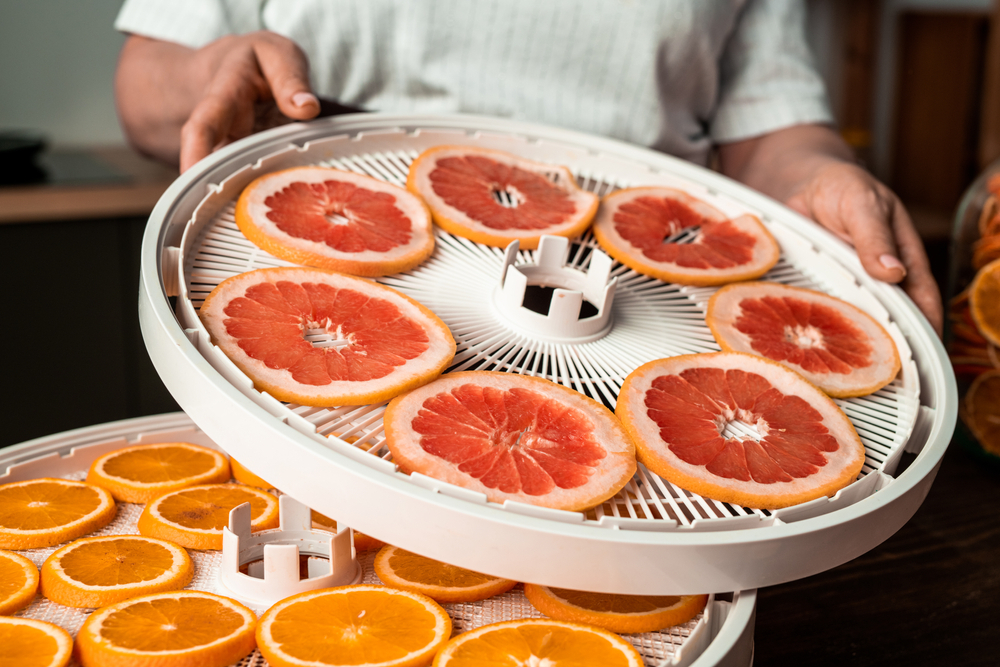
Food may be stored for a long time by being dehydrated, which is a quick and efficient process. You can lengthen the shelf life and preserve its nutritious content by eliminating moisture. These detailed procedures should be followed to dehydrate your food effectively:
Set the temperature
Determine your food’s ideal temperature before you start the dehydration process. A separate temperature setting is needed for each type of food to accomplish effective drying. Consult the instructions that came with your food dehydrator to get this information. You may choose the perfect temperature with the guidance of these recommendations, ensuring that your food dries well without losing any of its taste or nutrients.
Start the dehydration process
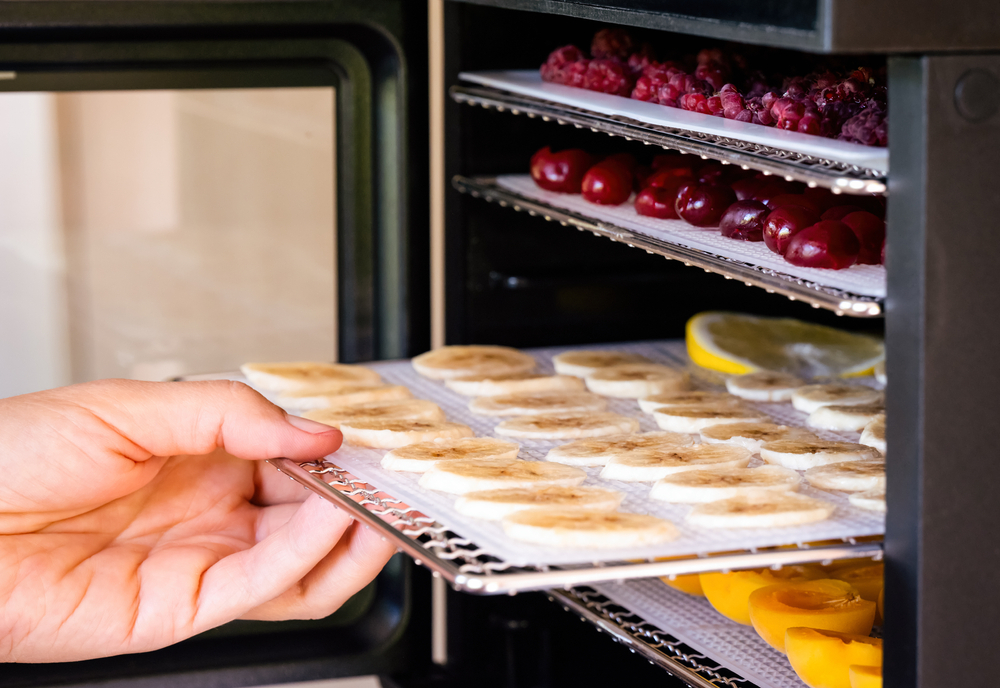
Once you have established the ideal temperature, fill your trays with your ingredients and start the dehydration process. Make sure the food is equally spread on the dehydrator’s trays before adding it. This will allow for optimal ventilation. Turn on the dehydrator after everything is ready and watch the magic unfold. Remember that the drying time can vary greatly based on the different type and the amount of moisture it contained when it was first prepared. To get the desired outcomes, patience is a must. Progress should also be checked occasionally.
Rotate and rearrange trays (if needed)
You might need to rotate or rearrange the trays in your dehydrator if it has more than one throughout the drying process. This little step is essential to ensuring even heat distribution throughout the food dehydrator. Any possible hotspots or cold zones can be removed by rotating the trays or moving their placements. By doing so, you can ensure uniform drying and prevent any unfavorable changes in texture or flavor.
Check for dryness
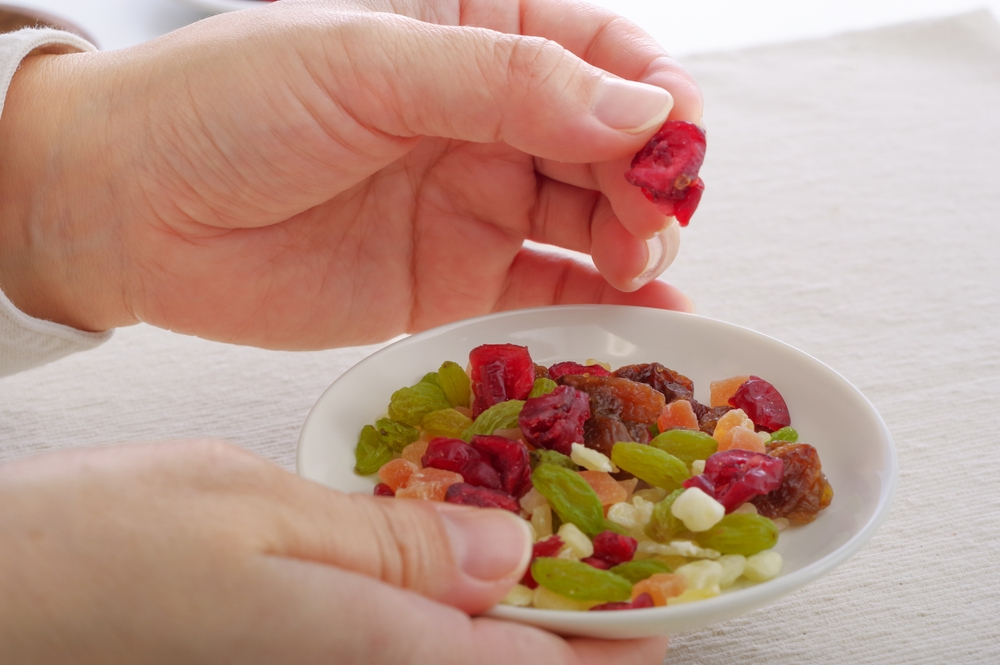
To avoid over- or under-drying, it is crucial to check your “work” for dryness regularly. The drying time may vary depending on the particular one and the ambient factors. Gently touch the food and feel the texture to see if it has been completely dehydrated. No moisture should be left in the meal, which should feel leathery and dry. By doing this check regularly, you may attain the optimum amount of dehydration without sacrificing the nutritional value of your diet.
Cool and condition the dried food
After dehydrating, take it out of the machine and let it cool fully. The drying process must be completed by cooling to avoid condensation while being stored. Consider an optional conditioning phase for best outcomes.
This lowers the possibility of food spoiling by allowing any leftover moisture to disperse uniformly throughout the product. Conditioning guarantees that the food is dried uniformly throughout and lengthens its shelf life.
Store the dried food
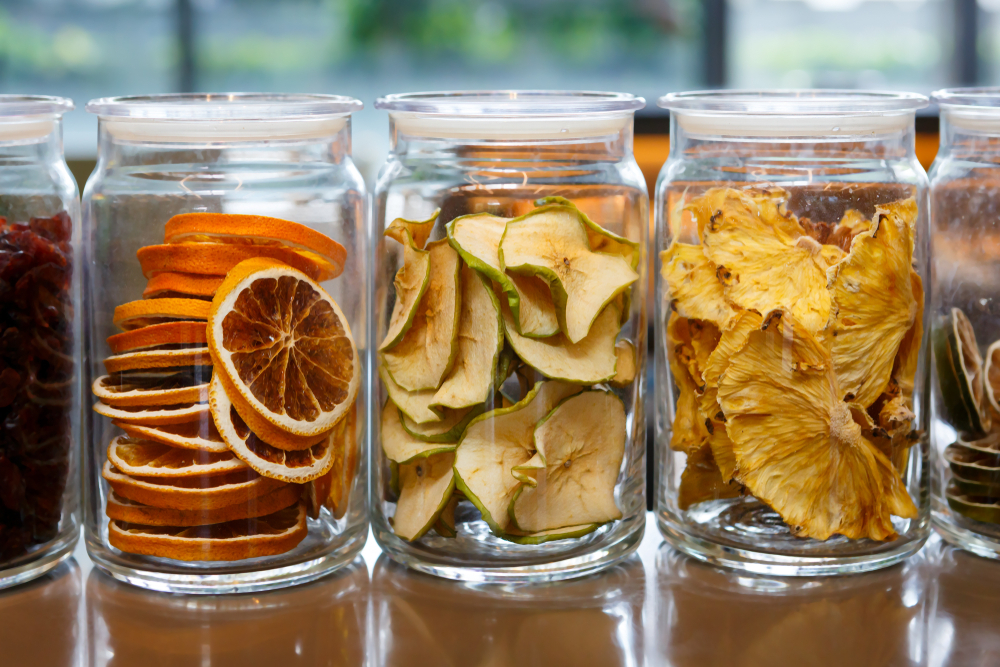
After conditioning, it’s time to store your dehydrated food properly. Transfer your work into airtight containers, resealable bags, or your favorite mason jars taking care to remove any excess air. Choose containers designed for long-term storage and ensure they are clean and dry.
Remember to label the containers with the contents and the date of dehydration to identify your stored items easily. Proper storage techniques will ensure your dehydrated food remains fresh, flavorful, and ready for future use.
Conclusion
The complete guide to dehydrating food offers helpful information on this preservation strategy’s advantages, nutrients, techniques, hints, and storage. Food dehydration has a number of benefits, including a longer shelf life, improved tastes, and the conservation of vital minerals.
The tutorial discusses several dehydration techniques, such as sun, oven, and dehydrator drying. Additionally, it provides helpful advice on how to properly dehydrate food and store it to preserve its freshness and flavor.

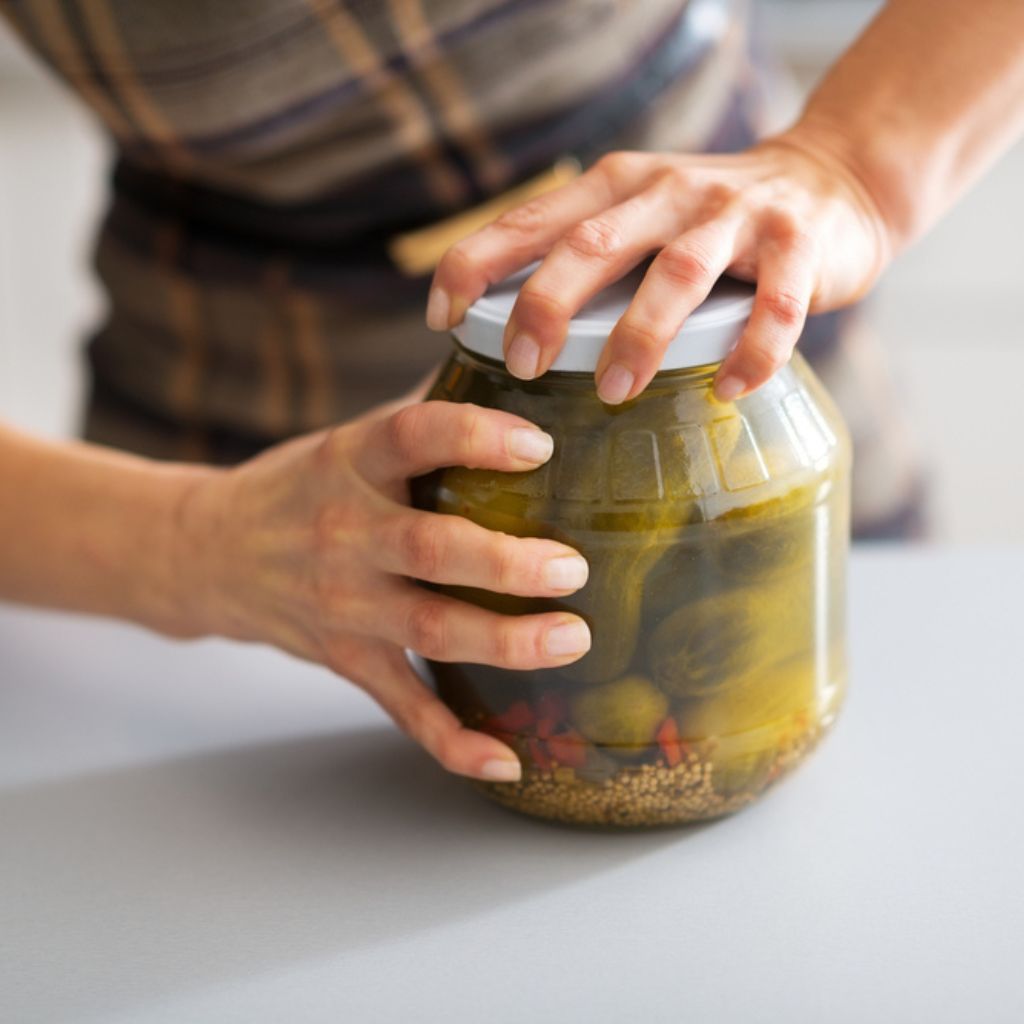
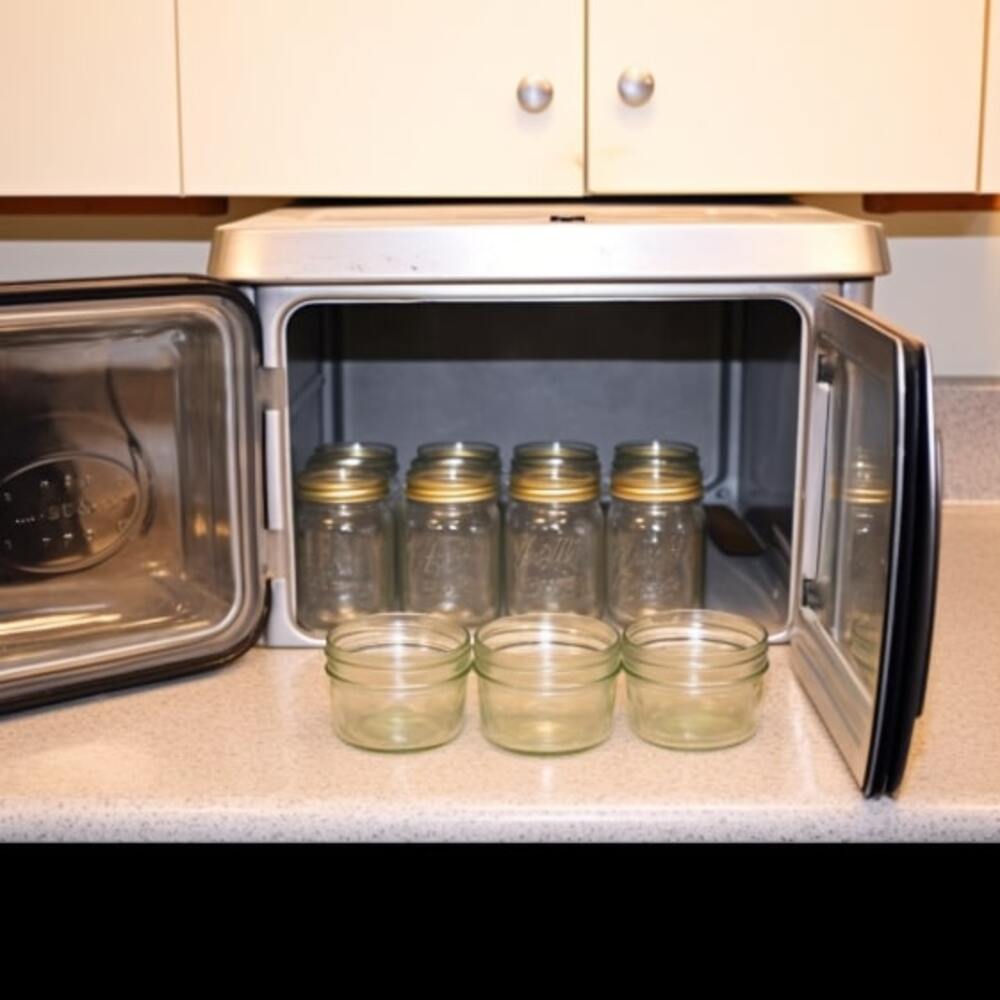
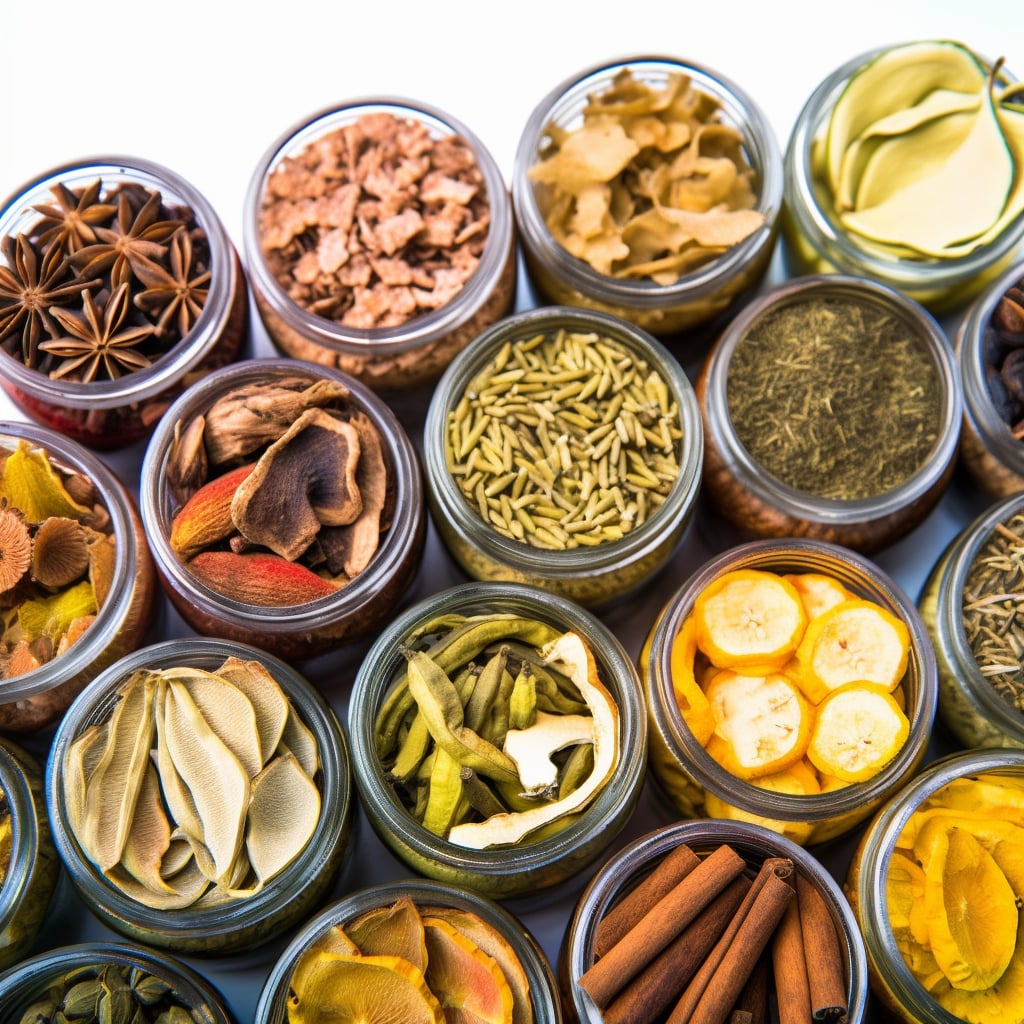
![Top 5 Best Jar Opener for Seniors Elderly [Updated 2023]](https://manzanillanyc.com/wp-content/uploads/2023/07/Top-5-Best-Jar-Opener-for-Seniors-Elderly-Updated-2023.jpg)

